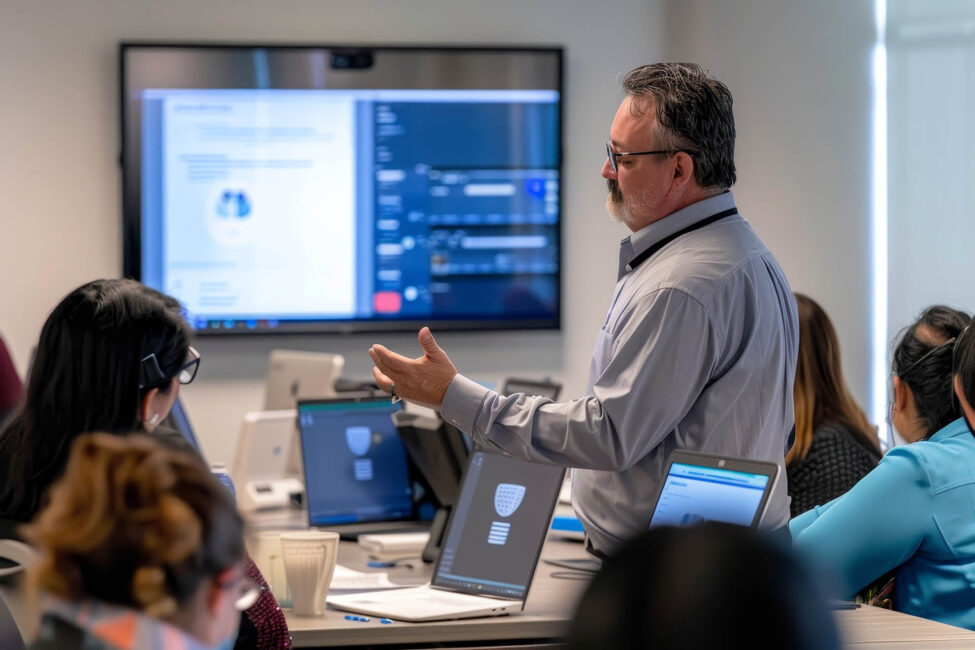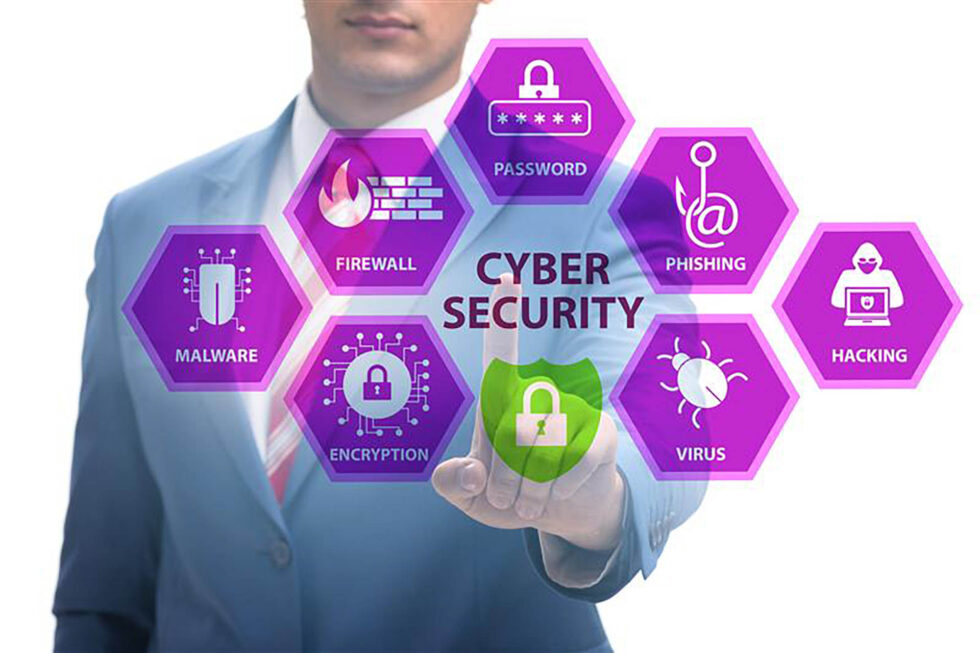by Paola Rotondi, Business Development Executive
As I immerse myself into cybersecurity here at SmartSource, I notice that in today’s rapidly evolving digital landscape, there is an urgent need for cybersecurity awareness. From phishing attacks to ransomware, businesses must not only invest in best-in-class technical solutions but also create a culture where every employee plays an active role in securing company data.
Here’s what I have discovered about how to instill a culture of cybersecurity awareness and responsibility across organizations:
7 STEPS TO REINFORCE A CYBERSECURITY CULTURE

1. Start from the Top
It seems obvious, but leadership sets the tone for the entire organization. When executives and managers prioritize cybersecurity (and sometimes they don’t), employees are more likely to follow suit. It’s important for leaders to openly discuss data protection and adhere to the same security protocols expected from their teams. Think on how to create an atmosphere where cybersecurity is seen as a company-wide priority rather than an IT-only concern.
2. Implement Ongoing Training
Cybersecurity is not a “one-and-done” topic. As cyber threats evolve, so should your team’s knowledge. Regular, engaging training sessions help keep everyone informed about the latest threats and best practices. That’s why at SmartSource, we offer KnowBe4’s leading security awareness training platform as part of a comprehensive suite of solutions. It provides simulated phishing attacks and interactive content to keep employees on their toes. Consider gamifying the training process to make learning about cybersecurity fun, encouraging active participation. Not only does it strengthen their defenses against phishing attacks but improves the overall cybersecurity posture.
3. Foster Accountability
Make it clear that everyone, from entry-level employees to C-suite executives, is accountable for their actions online. This can be reinforced by clear policies, transparent communication, and setting cybersecurity performance goals within annual reviews.
4. Encourage Reporting
Create a safe environment for employees to report potential threats or mistakes without fear of punishment. This can significantly reduce the risk of cyber incidents going unnoticed. Whether it’s a suspicious email, an unsecured device, or even a minor policy violation, empowering employees to come forward can make the difference between preventing a breach or suffering from one.
5. Promote a “Security-First” Mindset
Every action taken should have cybersecurity in mind. Take time to develop processes that integrate security best practices into everyday operations—like double-checking URLs, securely sharing sensitive documents, or updating passwords regularly. By embedding security into daily routines, it reinforces the message that cybersecurity is not just IT’s responsibility, but everyone’s.
6. Create Cross-Department Collaboration
Cybersecurity doesn’t just impact the IT department—it affects every department within the organization. From Finance to HR, every team handles sensitive information that could be targeted by cybercriminals. By promoting collaboration between departments, you foster a collective responsibility for security.
7. Celebrate Successes
When your team successfully catches a phishing attempt or significantly improves its cybersecurity practices, recognize and reward their efforts. Publicly celebrating wins reinforces positive behavior and demonstrates that cybersecurity is valued at every level of the organization.
Building a culture of cybersecurity awareness and responsibility requires continuous effort, collaboration, and buy-in from all levels of an organization. By prioritizing training, fostering accountability, and encouraging open communication, businesses can better protect themselves from ever-growing cyber threats.
Curious about your organization’s cybersecurity culture? Ask your leadership: “What percentage of employees are Phish-prone?” If the answer is an “I don’t know”, then your organization might be at a higher risk for cybersecurity threats.
Your people are your last line of defense. Teach them well.
Need to discuss your organization’s cybersecurity needs? Let’s talk! Book a time with me and let’s get started.
Paola Rotondi, Business Development Executive

